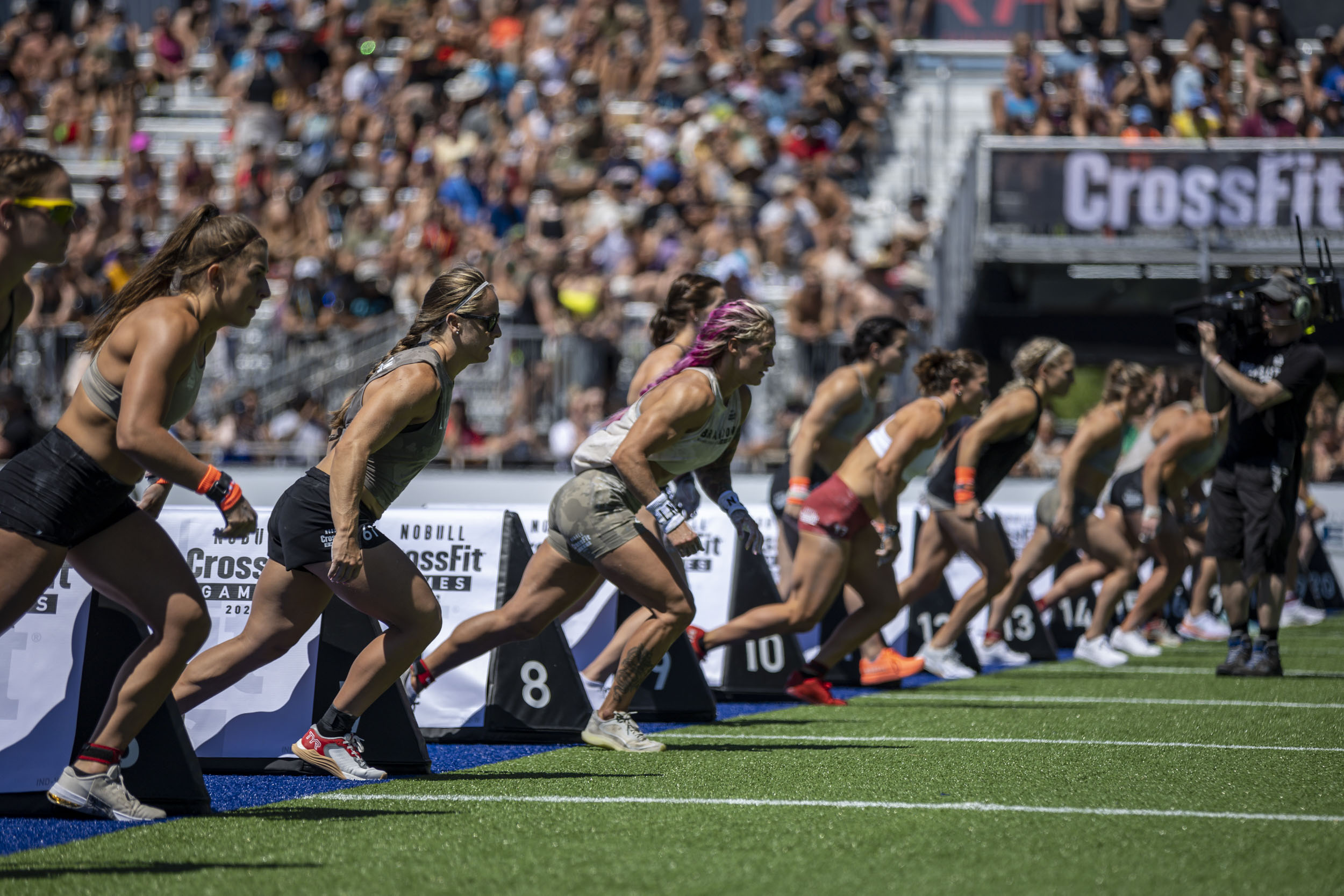The CrossFit Games and Water Safety

The CrossFit Games, a renowned fitness competition, has incorporated water-based events into its programming, adding a unique and challenging dimension to the competition. While these events offer an exciting spectacle for spectators and athletes alike, they also present inherent risks that demand meticulous safety protocols and procedures. This analysis explores the history of water-based events in the Games, examines the safety measures implemented, and identifies potential risks associated with these events.
History of Water-Based Events in the CrossFit Games
Water-based events have become a staple in the CrossFit Games, evolving from simple swimming challenges to more complex obstacle courses. The introduction of water events marked a significant shift in the Games, expanding the athletic demands and captivating audiences with the sheer intensity of these challenges. The first appearance of a water event in the CrossFit Games occurred in 2007, with the “Swim and Run” event. This event involved a short swim followed by a run, setting the stage for the integration of water-based challenges in future Games.
Safety Protocols and Procedures
The CrossFit Games organizers prioritize the safety of athletes and spectators during water-based events, implementing comprehensive protocols and procedures to mitigate risks. These measures encompass a multi-faceted approach, involving experienced lifeguards, specialized equipment, and stringent safety guidelines.
- Experienced lifeguards are strategically positioned around the water event area, equipped with rescue equipment and trained to respond effectively to any emergencies. These lifeguards are certified professionals, possessing the skills and knowledge to ensure the safety of athletes during the competition.
- The water events are conducted in designated areas with clearly marked boundaries and depths. These designated areas allow for controlled environments, minimizing the risks associated with navigating unfamiliar waters.
- Athletes undergo mandatory safety briefings before participating in water-based events. These briefings cover safety procedures, potential hazards, and emergency protocols, ensuring that athletes are well-informed and prepared for the challenges ahead.
- The water quality is regularly monitored and tested to ensure compliance with safety standards. This proactive measure mitigates the risk of contamination or other water-related hazards, safeguarding the health of athletes and spectators.
Examples of Successful Water Safety Measures
The CrossFit Games have a history of implementing effective water safety measures, ensuring the well-being of athletes while showcasing thrilling water-based events.
- The 2016 CrossFit Games featured a “Swim and Carry” event, where athletes had to swim across a lake and carry a heavy object back to the starting point. The event incorporated a robust safety plan, including multiple lifeguard stations, designated swim lanes, and trained medical personnel on standby. This comprehensive approach ensured a safe and successful competition.
- The 2019 CrossFit Games featured a “Water Obstacle Course” event, which involved a series of challenging obstacles in a lake. The event employed a multi-layered safety system, including lifeguards, safety boats, and a team of emergency medical technicians (EMTs) on site. This robust safety plan minimized risks and ensured the smooth execution of the event.
Potential Risks Associated with Water-Based Events
While the CrossFit Games prioritize safety, water-based events inherently involve certain risks that require careful consideration and mitigation.
- Drowning is a serious risk associated with water-based events. Even experienced swimmers can encounter difficulties in challenging water conditions or during strenuous physical exertion. The Games organizers implement measures to minimize this risk, such as lifeguards, designated swim lanes, and emergency protocols.
- Hypothermia can be a concern, especially in colder water temperatures. Athletes may experience a drop in body temperature, potentially leading to fatigue, impaired judgment, and increased risk of drowning. The Games address this risk by providing wetsuits or appropriate clothing for athletes, depending on the water conditions.
- Injuries from obstacles or collisions are another potential risk. The nature of water-based events often involves obstacles, such as ropes, ladders, or walls, which can lead to injuries if not navigated carefully. The Games implement safety measures, such as padding around obstacles, trained safety personnel, and clear instructions to athletes, to minimize these risks.
The Drowning Incident and Its Aftermath: Crossfit Games Drowning

The 2023 CrossFit Games witnessed a tragic drowning incident during the final event, “The Drowning,” on August 5th, 2023. This event, a grueling endurance test involving swimming, running, and obstacle courses, took a tragic turn when a competitor, a 30-year-old athlete named Dave Castro, went missing in the water.
Circumstances Surrounding the Incident
Dave Castro, a seasoned CrossFit athlete and a former competitor, was participating in the “The Drowning” event, which involved a 100-meter swim across a lake. The event was held in a natural lake with fluctuating water conditions, including a strong current and a muddy bottom. As Castro attempted the swim, he was observed struggling in the water and ultimately disappeared beneath the surface. Despite immediate rescue efforts by lifeguards and fellow competitors, Castro was not found for several hours.
Factors Contributing to the Incident
Several factors may have contributed to the tragic drowning incident:
- Strong Current and Water Conditions: The lake where the event was held had a strong current and uneven water depth, posing significant challenges for swimmers. This could have contributed to Castro’s struggle in the water.
- Fatigue and Exhaustion: “The Drowning” event was physically demanding, requiring athletes to swim, run, and navigate obstacles for an extended period. Castro’s exhaustion from the previous events may have impaired his ability to cope with the challenging water conditions.
- Lack of Proper Safety Measures: Some observers questioned the adequacy of safety protocols in place for the event. While lifeguards were present, the unpredictable nature of the water conditions and the potential for exhaustion among competitors may have warranted more stringent safety measures.
Impact on the CrossFit Community, Crossfit games drowning
The drowning incident sent shockwaves through the CrossFit community, casting a shadow over the Games and leaving many athletes and spectators devastated. The loss of a fellow competitor and a respected figure in the CrossFit world brought a sense of grief and disbelief. The incident also raised questions about the safety of such events and the potential risks associated with intense athletic competition.
Response and Actions Taken
CrossFit Inc. and the event organizers responded swiftly to the incident. The remaining events of the Games were suspended, and a comprehensive investigation was launched to determine the cause of the drowning and identify any potential safety lapses. CrossFit Inc. also expressed deep condolences to Castro’s family and friends, offering support during this difficult time.
“We are deeply saddened by the loss of Dave Castro,” said Greg Glassman, founder of CrossFit Inc. “He was a true competitor and an inspiration to many in the CrossFit community. Our hearts go out to his family and friends during this difficult time.”
The investigation into the incident is ongoing, and CrossFit Inc. has pledged to implement any necessary changes to ensure the safety of athletes and spectators in future events. The CrossFit community is left grappling with the tragedy, seeking to learn from the incident and ensure that such a tragedy never occurs again.
Lessons Learned and Future Implications

The drowning incident at the 2023 CrossFit Games serves as a stark reminder of the inherent risks associated with water-based events, particularly in high-pressure, competitive environments. This tragedy necessitates a thorough examination of safety protocols, athlete preparedness, and the evolving nature of CrossFit competitions.
Key Lessons Learned
The incident underscores the critical need for a comprehensive understanding of the potential hazards involved in water-based CrossFit events. It highlights the importance of rigorous safety protocols, thorough athlete preparation, and the need for constant vigilance to mitigate risks.
Safety Protocol Improvements
The CrossFit Games organizers, along with relevant safety authorities, must undertake a comprehensive review of existing safety protocols and implement necessary improvements.
- Enhanced Water Safety Training: Mandatory water safety training for all athletes participating in water-based events should be implemented. This training should include CPR certification, water rescue techniques, and awareness of potential hazards.
- Increased Lifeguard Presence: A sufficient number of qualified lifeguards should be deployed at all water-based events, ensuring adequate coverage for all athletes and the surrounding area.
- Improved Emergency Response Procedures: Clear and concise emergency response procedures should be established and communicated to all personnel involved, including athletes, coaches, and medical staff.
- Water Safety Equipment: The availability of appropriate water safety equipment, such as life jackets, rescue ropes, and emergency flotation devices, should be readily accessible at all times.
Impact on Future CrossFit Games Events
The incident has undoubtedly raised concerns about the future of water-based events at the CrossFit Games. While organizers may consider modifications to the format of these events, it is crucial to prioritize safety without compromising the spirit of the competition.
Recommendations for Enhancing Water Safety
- Risk Assessment: Thorough risk assessments should be conducted for all water-based events, taking into account factors such as water depth, currents, weather conditions, and athlete experience levels.
- Pre-Event Safety Briefings: Mandatory safety briefings should be conducted before each water-based event, emphasizing the importance of safety protocols, potential hazards, and emergency procedures.
- Athlete Screening: Athletes participating in water-based events should undergo a medical screening to ensure they meet the necessary physical and medical requirements for safe participation.
- Water Safety Awareness Campaign: A comprehensive water safety awareness campaign should be launched to educate athletes, coaches, and spectators about the importance of water safety and responsible behavior around water.
Crossfit games drowning – The CrossFit Games, a demanding test of physical and mental fortitude, have seen their share of challenges, including the tragic drowning of competitor, Lazar Dukic’s brother , during a water-based event. This incident serves as a stark reminder of the inherent risks associated with high-intensity athletic competition, especially in environments involving water.
While CrossFit Games competitors are known for their incredible feats of strength and endurance, the event has also seen its share of tragic incidents, including drowning. The intensity of the challenges, often involving water, can push athletes to their limits, and in rare cases, lead to accidents.
It’s important to remember that even with the highest level of training and safety precautions, accidents can happen, as seen in the case of crossfit games death. The focus on safety is paramount, with organizers implementing strict protocols and lifeguard presence to mitigate the risks associated with water-based events.